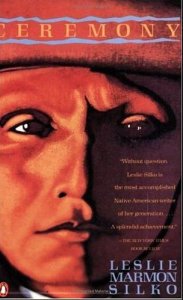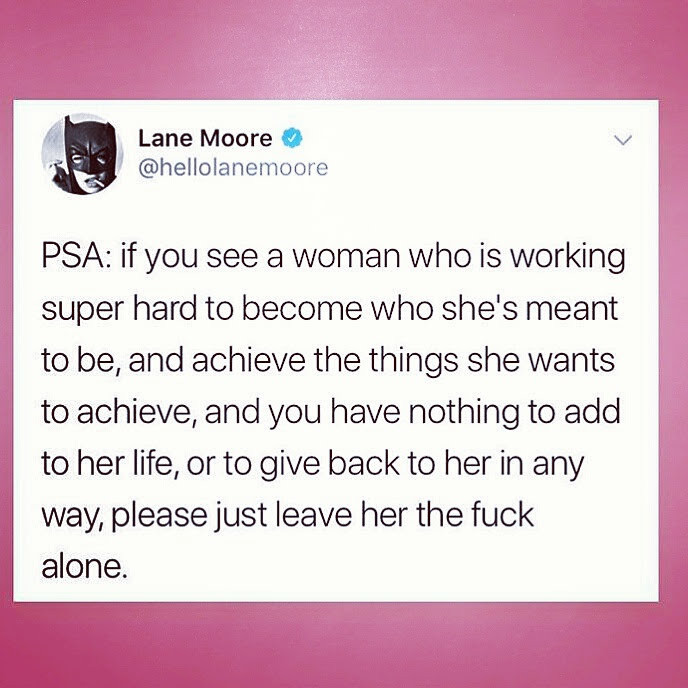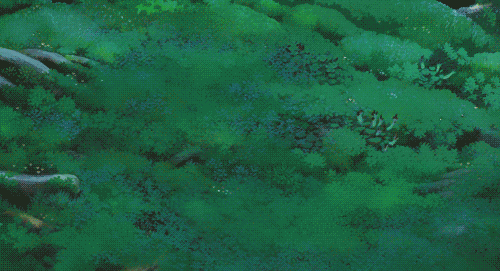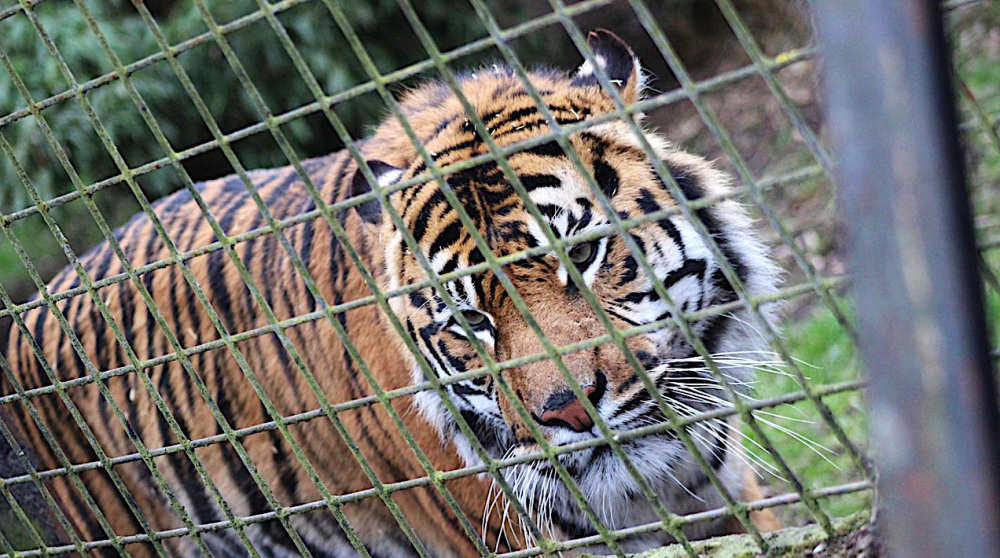
The good news first—I got along better with Leslie Marmon Silko’s Ceremony than with N. Scott Momaday’s House Made of Dawn. I found the writing evocative; the descriptions of the landscape are stunning and it’s a very rich, multi-layered book. The bad news—it was still hard work. There’s not much of a plot, the story isn’t told chronologically, there’s a mix between prose and poems, and without some research, a lot of it would have gone over my head. And that even though I studied cultural anthropology and have at least some idea of Native American mythology.
Given its complexity and that I did only very little research after finishing it, I can’t write an exhaustive review. But I can give you a brief summary and focus on some of the elements that stood out for me.
Tayo, who is half Laguna and half White, suffers from PTSD. He’s a veteran of the war in the Pacific. But not only that, he was also a prisoner of war and one of only a few to survive the notorious Bataan Death March. He’s haunted by the atrocities of war, like the killing of Japanese prisoners, and the things he saw during the march, especially the death of his best friend Rocky. After his captivity, after the war, Tayo spends time at an army hospital but back at the reservation, it’s clear, he’s not cured. He hallucinates, hears voices, drinks too much and gets violent. His family feels that only a medicine man can help but the first ceremony doesn’t change anything because the medicine man is stuck in the past. Only when Tayo finds another medicine man, who incorporates the changes the world has undergone, does he have a chance to heal.
The book explores many themes. Change and identity, the way white people destroy nature and other humans, war, spirituality, the landscape and nature. One could pick any of these themes and write endlessly about it. Since I read this for the readalong, I’ll focus on a few of the war elements.
There are several things that stood out. First, Tayo, Rocky, and their friends sign up because they hope that fighting for the US, will help them to be accepted. To become “real Americans” one could say. Once back, they soon learn that nothing has changed. They don’t receive any recognition and are pretty much where they were before, only worse off because now they have to deal with contradictions and trauma. Tayo discovers one of the biggest contradictions once he realizes that the Japanese look similar and that the faces of his friends and the soldiers merge in his hallucinations. That’s when he understands he has been instrumentalized by the whites. But not only that – they value him and his people as little as the Japanese. The atomic bomb was tested near the Indian reservations and then used to bomb people, who look a lot like the Indians. The sequence below illustrates this very well.
He had been so close to it, caught up in it for so long that its simplicity struck him deep inside his chest: Trinity Site, where they exploded the first atomic bomb, was only three hundred miles to the southeast, at White Sands. And the top-secret laboratories where the bomb had been created were deep in the Jemez Mountains, on land the Government took from Cochiti Pueblo: Los Alamos, only a hundred miles northeast of him now, still surrounded by high electric fences and the ponderosa pine and tawny sand rock of the Jemez mountain canyon where the shrine of the twin mountain lions had always been. There was no end to it; it knew no boundaries; and he had arrived at the point of convergence where the fate of all living things, and even the earth had been laid. From the jungles of his dreaming he recognised why the Japanese voices had merged with Laguna voices, with Josiah’s voice and Rocky’s voice; the lines of cultures and world were drawn in flat dark lines on fine light sand, converging in the middle of witchery’s final ceremonial sand painting. From that time on, human beings were one clan again, united by the fate the destroyers planned for all of them, for all living things; united by a circle of death that devoured people in cities twelve thousand miles away, victims who had never known these mesas, who had never seen the delicate color of the rocks which boiled up their slaughter.
Needless to say, that the book is to a large extent a criticism of white society and the way White people destroy everything – other people, animals, and nature. In the ceremony, Tayo learns that there are forces, called destroyers, who brought witchery, or dark witchcraft into the world to destroy it. The whites seem to have been the most infected and now act according to the destroyers’ will.
I know I’m not doing this book justice. It’s extremely complex and poetic. To properly review and analyse it, it would need, at least, a second reading.
I didn’t fully warm to Ceremony. I liked the descriptions of the landscape best. And the parts where Tayo’s on a quest to find his uncle’s cattle. Tayo’s a keen observer and the harsh beauty of the land, the precariousness of life in a dry, desert like place, where livestock is constantly threatened to die of thirst, is powerfully rendered. On the other hand, when I look at our world today, the way climate change affects us all, when I think of the 6th extinction that’s currently underway, and how “he who shall not be named” uses a rhetoric of total destruction, I can’t help but notice that Ceremony is an important book. Many of the themes are as actual today as they were when Leslie Marmon Silko wrote it.
I hope I could give a bit of an idea of the book. Its’ definitely ideal for students of American and/or Native American Literature, as it’s so rich and offers so many topics for analysis and discussion.
Here’s one of my favourite quotes:
The buzzing of grasshopper wings came from the weeds in the yard, and the sound made his backbone loose. He lay back in the red dust on the old mattress and closed his eyes. The dreams had been terror at loss, at something lost forever; but nothing was lost; all was retained between the sky and the earth, and within himself. He had lost nothing. The snow-covered mountain remained, without regard to titles of ownership or the white ranchers who thought they possessed it. They logged the trees, they killed the deer, bear and mountain lions, they built their fences high; but the mountain was far greater than any or all of these things. The mountain outdistanced their destruction, just as love had outdistanced death. The mountain could not be lost to them, because it was in their bones; Josiah and Rocky were not far away. They were close; they had always been close. And he loved them then as he had always loved them, the feeling pushing over him as strong as it had ever been. They loved him that way; he could still feel the love they had for him. The damage that had been done had never reached his feeling. This feeling was their life, vitality locked deep in blood memory, and the people were strong, and the fifth world endured, and nothing was ever lost as long as the love remained.
Other Reviews
TJ (My Book Strings)
*******
Ceremony is the fifth book in the Literature and War Readalong 2017. The next book is the French WWII novel Suite Française by Irène Nemirovsky. Discussion starts on Tuesday 31 October, 2017. You can find further information on the Literature and War Readalong 2017, including the book blurbs here.
Share this:




